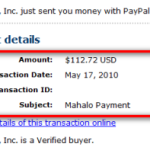Malware is a tremendous nuisance for each and every website owner. It breaks down the consumer’s experience, will cause Google to penalize your internet site, infects you platforms, and more. It is not unexpected that malware and techniques to protect against it should be a significant subject for businesses online.
The True Cost of Business: How Malware Will Send You Running for Cover
There are several concerns for your SEO should malware attack your site. The damage malware can do may seem apparent nevertheless it is recommended that you continually pay attention to these consequences to prepare your site and know what to protect yourself against should your website every jeopardized.
Weak Content.
It is fairly apparent that your reputation is going to be in danger in the event that you are affected by malware. There will undoubtedly be spammy links to your internet site and mediocre information in your remarks. This leaves your viewers unlikely to be overly enthusiastic and continue exploring and reading.
Status.
Your credibility is likely to be in jeopardy. Viewers will be reading the poor content on your site in addition to seeing the spammy links. Furthermore, this activity will also damage your reputation
with Google, who will certainly learn that your website is continually compromised. Because of this e-mail originating from your site and searches taking viewers to your landing page will now have a warning sign attached. Viewers will be told that your site will be harmful to their computer.
Drop in Standings.
This is how malware becomes a negative factor for your search engine optimization. Google will almost certainly recognize the spammy links on your site. Regardless of whether this is an error on your part or not, Google will not place a site such as this at the top of its search engine results page or SERP.
Loss of Admission to Your Site.
Viruses will eventually take control of your website entirely and then have complete access to sensitive information. You can guarantee that this is not likely to create a pleased website, patron. From your SEO point of view, this is exactly when exceptionally poor SEO practices become evident.
How to Make Fewer Malware Mistakes.
Day in and day out your website is susceptible to assaults from malware and viruses. It is vital to install the appropriate website security to prevent this kind of attack. Although there are numerous software programs you can employ, you will need to make sure they are kept up-to-date. Attacks on your business do not simply concern you; it impacts every consumer browsing your site.
The most effective way to safeguard your site from a malware attack is by keeping your firewall and virus safeguards current. Make sure you have a secure server and set up any security upgrades as they become available to you. Install an anti-spyware system as it will consistently go into your businesses website, checking data files.
Removing Malware even when you thought your site was safe.
Eliminate every link to a malware site that is now connected to our site. Remove afflicted software and never open it up again until you finally confident that it is no longer infected. Get rid of malware infected ads from any network you suspect until you are certain the network is clean.
Get rid of user-generated posts in which malware exists. IF you believe your site has been hacked, take the site offline to prevent placing visitors and customers in danger. Remove all the harmful web page code and back doors left behind by the hacker. These back doors give the hacker the ability to get into your site again, despite security upgrades.
Malware Lessons Learned the Hard Way.
Vital protection against malware comes from staying current with third-party software patches and using resilient server passwords. When testing for the existence of the malware, be sure to check the code located in on your server. Malware originates in many forms, from an unsolicited ad recurring on your site to an executable file that contaminates site guests who click on it.








